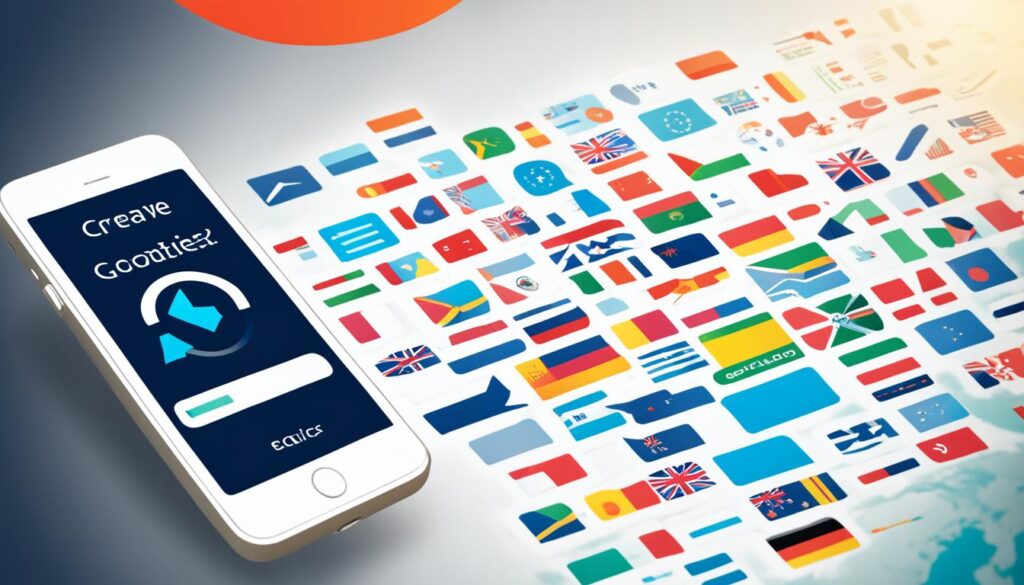
The digital revolution has made it possible for brands to reach customers worldwide. But, just translating your content is not enough for global success. To really connect, you need to understand and use the principles of relevancy and localization. This means making your technical SEO content fit the language and interests of your target audience.
It's crucial to know demand varies from country to country when creating a global SEO plan. To succeed, consider cultural interests, slang, and local vocabulary. Hreflang tags tell search engines what countries and languages your content is for. This helps avoid showing the wrong content to users and prevents duplicate content issues.
Adapting your content to each location's search interests is key. Perform keyword research for each country. Add local slang and vocabulary. For companies with many locations, make unique pages that mention local spots and activities.
Bringing together global, local, and mobile SEO strategies is essential. Focus on countries with high customer potential and make content that's relevant locally. Ensure your website is mobile-friendly to reach more people.
Checking how well your international SEO is doing and tweaking it based on data is vital. Keep an eye on local trends and updates to search engine rules. This way, you can keep your strategy effective and stay ahead.
International SEO lets brands reach a broad audience and have a powerful global presence. To learn more about the strategies for global success, let's explore how to stand out worldwide.
Key Takeaways:
- Global success requires more than just translating content; it means making your website relevant and localized worldwide.
- Knowing that demand changes by country and using hreflang tags are critical for international SEO success.
- Adapting content for local audiences by using country-specific keywords and local language is key for success.
- To win globally, you must combine strategies that focus on global, local, and mobile search optimization.
- Keeping your SEO up-to-date with local trends and search engine changes is essential for long-term success.
Understand Demand Variations and Build a Global Framework
Going global means realizing that content, keywords, and how people search can change a lot. Just translating keywords isn't enough. We need to know about local culture, slang, and what people really like.
Using hreflang tags helps show content in the right place. These tags tell Google which language and place your content fits. Putting these tags in HTTP Headers or site maps, and following the ISO 639-1 format matters a lot. Withhreflang tags, we avoid showing the same content in several places. It's key to make sure site maps aren't too big. This makes sure your content's location is clear to search engines.
Understanding Global Search and Keyword Demand
To do well globally, we must dig deep into what different target markets do and need. This includes looking closely at what keywords work best in a specific area. Beyond translation, it's about knowing what really speaks to people in each place.
"By analyzing global search patterns, businesses can gain insights into the keyword demand and traffic trends of their target markets."
Building an Effective SEO Framework
A strong SEO plan is the backbone of a global strategy. Hreflang tags make sure your content is seen by the right people in different countries. They say who your content is for and where. This is a big step in avoiding issues with showing the same content in multiple places.
Placing hreflang tags is done in a few ways, such as from HTTP Headers to your site's HTML. No matter how you do it, sticking to ISO language codes is a must. And ensuring the site map isn't too big is also crucial. This all helps search engines see who each piece of content is for.
On top of that, making your website work well for everyone around the world is important. A site that's easy to use for people speaking any language and in any place is a big plus. It can improve how often your site is found and visited.
| Benefits of a Global SEO Framework | Challenges to Overcome |
|---|---|
|
|
Localize the Content and Unify Strategies
Simply translating content for global SEO is not enough. You must localize it to truly connect with various audiences. Create localized content that fits local search habits and interests. Use keyword research for each target country, and add local words and slang.
For companies with many branches, having separate landing pages is key. Make sure these multilingual landing pages talk about local landmarks and activities. This makes your business feel at home in each region.
But, an effective global SEO plan needs more than just looking local. You must also unite strategies for global, local, and mobile success. It’s important to choose the best countries for your business and focus on them.
Tailoring your content to local needs is crucial. Use keywords for the area, talk about local events, and use local SEO methods. This helps your business show up more in local searches.
Don’t forget about mobile optimization. More people rely on smartphones and tablets today. Your website should be easy to use on mobile devices for better engagement.
Benefits of Localizing and Unifying Strategies
By going local and combining global, local, and mobile strategies, your business can reach everyone effectively. This method improves targeting and user experience, boosting your visibility online.
It's vital to track how well your global SEO strategy is working and make changes regularly. Keeping up with local trends and search engine updates is essential. This ensures your business stays relevant and continues to attract a global audience.
| Benefits of Localizing and Unifying Strategies |
|---|
| Targeted content that resonates with local audiences |
| Improved user experience for different regions and languages |
| Increased online visibility and organic traffic |
| Better rankings in local search results |
| Maximized reach and engagement through mobile optimization |

Using localized content, detailed keyword research, multilingual landing pages, and a solid global, local, and mobile strategy, you can grow your business. This approach helps you reach more people and be powerful online worldwide.
Conclusion
Going global with your website through international SEO is key. It allows you to reach people around the world. It starts with learning what people everywhere like and need.
Then, you make your website match what they look for. This helps your content show up on search engines in different places. Using multiple languages and special tags for each country makes sure people find the right version of your site. This also stops problems with having the same content in more than one place.
Being mobile-friendly is super important now. A website that works well on phones and tablets makes people happy. It also helps search engines like your site more. Don't forget to keep an eye on what's popular locally and what search engines want. This info is vital to keeping your site's international SEO strong.
Using international SEO can really make your business stand out worldwide. It involves many steps, like adapting words to fit other languages and getting linked from all over. Everything you do to make your website better helps you succeed in the global market.
FAQ
What is SEO content localization?
SEO content localization is about making website content fit for worldwide visitors. It means finding the best words for search in each country. This way, the content matches what people are looking for and speaks their language.
Why is it important to understand demand variations?
Knowing what different countries like is key for global SEO. Content, keywords, and how search results look can change a lot. By getting this, businesses can make their website just right for each place.
How do hreflang tags help with global SEO?
Hreflang tags are for telling Google what language and country your pages target. They stop your content showing up as copies in the wrong place. You can use these tags in several ways, like with the HTTP Header or directly on the page.
Why is localizing the content important?
Localizing helps content feel like it's speaking directly to people from different places. It includes using local words, popular searches, and even slang. This makes the content seem more familiar and friendly to its audience.
How can businesses implement multilingual landing pages?
To reach different areas, businesses can make special landing pages. These pages could talk about local places to visit or favorite activities. making visitors feel like the site was made just for them.
What are the essential elements of a successful international SEO strategy?
To succeed globally, SEO needs local keywords, a good website, and content in different languages. It also needs hreflang tags, a mobile-ready site, and links from around the world.
How can businesses measure the success of their international SEO strategy?
Check numbers like website visits, where you rank in searches, and how many people buy or show interest. This info tells you what's working and what needs to change on your website strategy.











